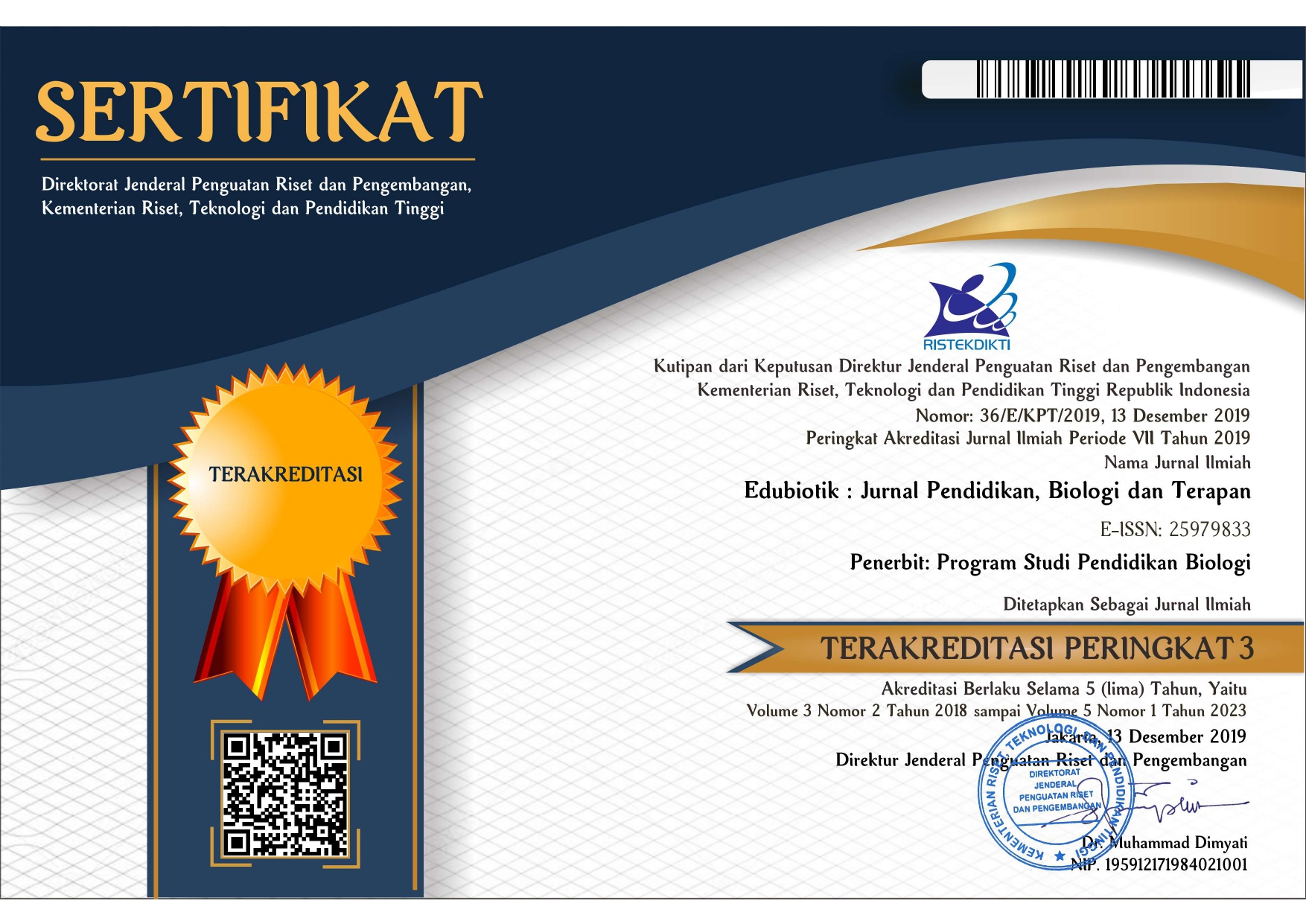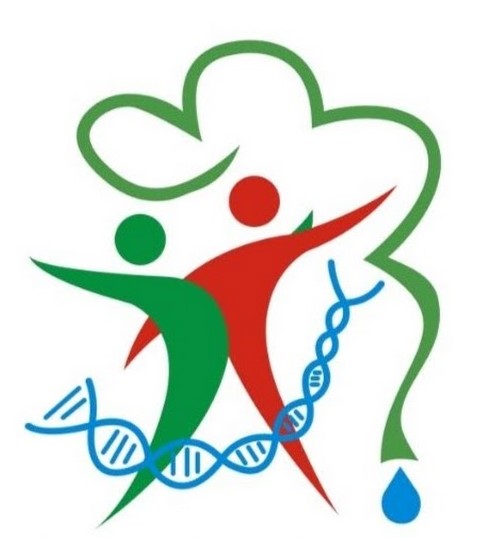Identification of bacterial diversity in the feces of children with diarrhea
Abstract
Diarrhea diseases collectively constitute a serious public health challenge globally, especially as the leading cause of death in children. This study aims to identify the diversity of bacteria that cause diarrhea in children. This type of research is cross-sectional with a prospective descriptive approach. Sampling of 50 children with diarrhea in several health centers in Makassar City. The instrument used in this study was to use a list of questions related to the suitability of the desired sample and a descriptive chart of gram-negative bacteria and adapted to Bergey's Manual of Determinative Bacteriology to identify the bacteria obtained. The process of testing specimens with the culture method by isolation and inoculation of samples for further biochemical tests including Triple Sugar Iron Agar (TSIA), Indole Motility Sulfite (SIM), Methyl Red (MR), Vogas Proskauer (VP), and carbohydrates tests were carried out at the Microbiology Laboratory of Hasanuddin University Hospital. The results showed that the Escherichia coli bacteria were 15 (30%), Klebsiella sp as many as 14 (28%), Enterobacter sp as many as 12 (24%), Proteus mirabilis as much as 4 (8%), Proteus vulgaris as much as 4 (8%), and the bacteria Alcaligenes faecalis only 1 (2%). The conclusion of the study was that the most common type of bacteria found was Escherichia coli.
References
Bellini, C., & Dumoulin, A. (2018). Management of acute diarrhea. Revue Medicale Suisse, 14(622), 1790–1794. https://doi.org/10.5005/jp/books/12945_8
Brandt, K. G., de Castro Antunes, M. M., & da Silva, G. A. P. (2015). Diarreia aguda: manejo baseado em evidências. Jornal de Pediatria, 91(6), S36–S43. https://doi.org/10.1016/j.jped.2015.06.002
Cheng, V. C. C., Yam, W. C., Tsang, L. L., Yau, M. C. Y., Siu, G. K. H., Wong, S. C. Y., Chan, J. F. W., To, K. K. W., Tse, H., Hung, I. F. N., Tai, J. W. M., Ho, P. L., & Yuen, K. Y. (2012). Epidemiology of Klebsiella oxytoca-associated diarrhea detected by simmons citrate agar supplemented with inositol, tryptophan, and bile salts. Journal of Clinical Microbiology, 50(5), 1571–1579. https://doi.org/10.1128/JCM.00163-12
Farthing, M., Salam, M. A., Lindberg, G., Dite, P., Khalif, I., Salazar-Lindo, E., Ramakrishna, B. S., Goh, K. L., Thomson, A., Khan, A. G., Krabshuis, J., & Lemair, A. (2013). Acute diarrhea in adults and children: A global perspective. Journal of Clinical Gastroenterology, 47(1), 12–20. https://doi.org/10.1097/MCG.0b013e31826df662
Hamzah, W., Gobel, F. A., & Syam, N. (2020). Kejadian Diare Pada Balita Berdasarkan Teori Hendrik L. Blum Di Kota Makassar. Media Kesehatan Politeknik Kesehatan Makassar, 15(1), 50. https://doi.org/10.32382/medkes.v15i1.1060
Huang, C. (2020). Extensively drug-resistant Alcaligenes faecalis infection. BMC Infectious Diseases, 20(1), 1–11. https://doi.org/10.1186/s12879-020-05557-8
Janasuta, P. B. R., Sukrama, D. M., & Dwija, I. B. N. P. (2020). Pola Kepekaan Bakteri Enterobacter Sp Yang Diisolasi Dari Spesimen Urin Di RSUP Sanglah. Jurnal Medika Udayana, 9(1), 51–56. https://ojs.unud.ac.id/index.php/eum/article/view/58210
Kementerian Kesehatan Republik Indonesia. (2018). Profil Kesehatan Indonesia Tahun 2017. Kementerian Kesehatan Republik Indonesia. http://perpustakaan.bppsdmk.kemkes.go.id
Kim, D., Zeng, M. Y., & Núñez, G. (2017). The interplay between host immune cells and gut microbiota in chronic inflammatory diseases. Experimental and Molecular Medicine, 49(5). https://doi.org/10.1038/emm.2017.24
Kumar Trivedi, M. (2015). Phenotyping and Genotyping Characterization of <i>Proteus vulgaris</i> After Biofield Treatment. International Journal of Genetics and Genomics, 3(6), 66. https://doi.org/10.11648/j.ijgg.20150306.12
Makalew, M. A. J., Nangoy, E., & Wowor, P. M. (2016). Uji Efek Antibakteri Air Perasan Daging Buah Nanas (Ananas Comosus (L)Merr) Terhadap Bakteriklebsiella Pneumoniae. Jurnal E-Biomedik, 4(1). https://doi.org/10.35790/ebm.4.1.2016.11287
Muttaqin, G. M. E., Hartoyo, E., & Marisa, D. (2016). Gambaran Isolat Bakteri Aerob Diare pada Anak yang Dirawat di RSUD Ulin Banjarmasin Tahun 2015. Berkala Kedokteran, 12(1), 87. https://doi.org/10.20527/jbk.v12i1.360
Porotu’o, A. C., Buntuan, V., & Rares, F. (2015). Identifikasi Bakteri Aerob Pada Makanan Jajanan Jagung Bakar Di Pinggiran Jalan Ring Road Manado. Jurnal E-Biomedik, 3(1). https://doi.org/10.35790/ebm.3.1.2015.6614
Sani, A., Sartika, S., & Anugrah, I. (2020). Kontaminasi Bakteri Escheriscia Coli Pada Botol Susu Balita Dengan Kejadian Diare Pada Balita. Window of Public Health Journal, 22–30. https://doi.org/10.33096/woph.vi.38
Saputri, N., & Astuti, Y. P. (2019). Hubungan Faktor Lingkungan Dengan Kejadian Diare Pada Balita Di Puskesmas Bernung. Jurnal Ilmu Keperawatan Dan Kebidanan, 10(1), 101. https://doi.org/10.26751/jikk.v10i1.619
Sinaga, M. D., & Sembiring, N. S. B. (2016). Penerapan Metode Dempster Shafer Untuk Mendiagnosa Penyakit Dari Akibat Bakteri Salmonella. CogITo Smart Journal, 2(2), 94. https://doi.org/10.31154/cogito.v2i2.18.94-107
Sukut, S. S., Arif, Y. S., & Qur’aniati, N. (2015). Faktor Kejadian Diare Pada Balita dengan Pendekatan Teori Nola J. Pender di IGD RSUD Ruteng. Jurnal Pediomaternal, 3(2), 230–249. https://journal.unair.ac.id/download-fullpapers-pmnj4be06ad84dfull.pdf
Utami, N., & Luthfiana, N. (2016). Faktor-Faktor yang Memengaruhi Kejadian Diare pada Anak. Majority, 5, 101–106. https://juke.kedokteran.unila.ac.id/index.php/majority/article/view/893
Wang, M., Yi, M., Lu, M., Gao, F., Liu, Z., Huang, Q., Li, Q., & Zhu, D. (2020). Effects of probiotics Bacillus cereus NY5 and Alcaligenes faecalis Y311 used as water additives on the microbiota and immune enzyme activities in three mucosal tissues in Nile tilapia Oreochromis niloticus reared in outdoor tanks. Aquaculture Reports, 17(January), 100309. https://doi.org/10.1016/j.aqrep.2020.100309
Zikra, W., Amir, A., & Putra, A. E. (2018). Identifikasi Bakteri Escherichia coli (E.coli) pada Air Minum di Rumah Makan dan Cafe di Kelurahan Jati serta Jati Baru Kota Padang. Jurnal Kesehatan Andalas, 7(2), 212. https://doi.org/10.25077/jka.v7i2.804





.png)
2.png)

1.jpg)


